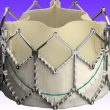Mitral regurgitation is the most common valvular heart disease. Its cause is most frequently functional or secondary dysfunction (functional mitral regurgitation, FMR) compared with degenerative mitral regurgitation (DMR), which is associated with decreased ventricular function, hospitalization for heart failure, and mortality. While medical treatment is effective over extended periods, a significant number of patients cannot...
COAPT: Nutritional Condition Is an Important Factor in Edge-to-Edge Treatment
Heart failure is strongly associated with malnutrition or poor nutrition, which has been linked to increased mortality during follow-up. We know that mitral regurgitation causes progressive heart failure and affects nutrition. The COAPT Study has demonstrated the benefits of edge-to-edge treatment in mitral regurgitation when combined with comprehensive medical treatment and maximum tolerated doses. However,...
COAPT: Promising 5-Year Outcomes
Secondary ischemic and non-ischemic mitral valve failure (SMR), produce left ventricle dilation, papillary muscle displacement, and impaired leaflet closure causing regurgitation. This will lead to ventricular function deterioration and bad prognosis. Edge-to-edge mitral valve repair with MitraClip has been shown safe and effective to treat SMR in the short term, but its evolution at 5...
ACC 2023 | TAVR in Low Risk Patients: 3-Year Outcomes
At present, transcatheter aortic valve replacement (TAVR) has become the gold standard in the US, regardless surgical risk. The current ACC and AHA guidelines recommend that a Heart Team make the decision for 65 to 80-year-old patients with aortic stenosis. In low risk patients, fast recovery and short term benefits of TAVR should be weighed...
The most read articles of january in solaci.org
These were the most read articles of interventional cardiology in solaci.org. Real-World Revascularization Strategy for Left Main Coronary Artery: Surgery or PCI? There are many current randomized trials comparing percutaneous coronary intervention (PCI) with myocardial revascularization surgery (MRS) for the treatment of left main coronary artery disease (LMCAD). Real-World Results of Different Devices for TAVR Transcatheter aortic valve replacement (TAVR) keeps...
Intervention in Patients with Takayasu Arteritis: Rescue Therapy or an Alternative Complementary to Immunosuppressive Therapy?
Takayasu arteritis (TAK) is an uncommon granulomatous large-vessel vasculitis that affects the aorta and its primary branches. The most frequently types of observed vascular compromise are obstructive lesions, and aneurysmal vascular lesions or dissections. In 2021, the American College of Rheumatology recommended not to implement percutaneous intervention (PI) with these patients and only use immunosuppressive...
The Most Important Articles of 2022 in Structural Heart Disease
Discover the most read scientific articles on interventional cardiology of 2022 in our website. We Should Treat Significant Stable CAD in Patients Undergoing TAVR Aortic stenosis is associated to significant coronary artery disease (CAD) in nearly 50% of cases. When we decide to treat aortic disease using surgery, it has been established we should also treat...
Real-World Revascularization Strategy for Left Main Coronary Artery: Surgery or PCI?
There are many current randomized trials comparing percutaneous coronary intervention (PCI) with myocardial revascularization surgery (MRS) for the treatment of left main coronary artery disease (LMCAD). In the European Society of Cardiology guidelines, PCI is classified as Ia (LMCAD with low-complexity coronary disease) or IIa indication (intermediate complexity), whereas, according to the American Heart Association...
Is the PASCAL Device Effective against MitraClip?
Mitral regurgitation (MR) is the most common valvulopathy and full medical treatment at maximal tolerated doses has been shown quite effective to treat it. However, its limited in a group of patients that require valve intervention. At present, the ideal treatment is surgical valve replacement, which is in many cases is not viable because of...
Valve-in-Valve Shows Good Evolution after 2 Years
The degeneration of bioprostheses in aortic position occurs at approximately after 10 to 15 years. In this scenario, the treatment of choice used to be redo surgery, but with the evolution of transcatheter aortic valve replacement (TAVR), it became a valid alternative with a level IIa B evidence. While there are currently multiple analyses of...








